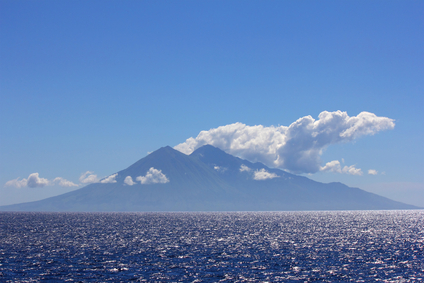Complex Volcanoes is one of the most fascinating features in the world. They are sometimes called compound volcanoes. This is because they have numerous features. These features depend on type on the methodology of the process of formation. Their towering peaks upsurge hundreds to thousands of meters. They also takeover their surroundings as they can be visually seen anywhere.
 Just like the name, they are made from stratified deposits of both sticky lava droppings together with fragmental solids. These solids erupts form the earth’s interior and flows through the strata into the earth surface. Majority of these complex volcanoes are multifarious structures constructed by manifold eruptions from high-level meeting and margin vents. Complex volcanoes only focus on eruption modifications, resulting to overlapping constructions. Others may be formed in just few years while other take up to millions of years to be fully formed. During formation, Complex Volcanoes can cause earth tremors mainly to the surrounding earth surface.
Just like the name, they are made from stratified deposits of both sticky lava droppings together with fragmental solids. These solids erupts form the earth’s interior and flows through the strata into the earth surface. Majority of these complex volcanoes are multifarious structures constructed by manifold eruptions from high-level meeting and margin vents. Complex volcanoes only focus on eruption modifications, resulting to overlapping constructions. Others may be formed in just few years while other take up to millions of years to be fully formed. During formation, Complex Volcanoes can cause earth tremors mainly to the surrounding earth surface.
Numerous composite volcanoes contain a crater at the top, which contains a fundamental vent or a gathered cluster of vents. Lavas can either flow over breaks in the depression wall or issue from cracks on the edges of the cone. Lava cools and solidified in the crevices, forming dikes like ribs, which significantly reinforce the cone to be compact. Once this lava cools below one degree, it forms these magnificent features. The important characteristic of a composite volcano is a channel system over which magma from a basin deep in the Earth’s shell upsurges to the surface. The volcano is assembled up by the accretion of solid exploded through the channel and rises in scope as lava, cinders, residue and others materials are added to its inclines.
These volcanoes are commonly experience in USA especially Mt. St .Helens and Mt. Shasta, Italy, Philippines, Japan Ecuador, and Canada.
By David Olmstead
We want pictures and location of the lanforms around the world and we need your help. Click get started button below.
In Asia, China, India, Nepal, and Bhutan are home to one of the eight wonders of the world and one of the most beautiful mountains in the world, the Himalaya Mountains also called the Himalayas. Boasting as the world’s highest and most famous mountain peak, Mt. Everest. Within the verse of the ‘Kumarsambhava’, Sanskrit […]
Nature have provided us with fascinating landforms and features. The most often adored landforms are volcanoes. Like the perfect cone structure of Mayon Volcano in the Philippines or Mount Fiji in Japan, people look at their beauty and wonder with great appreciation to nature. Volcanoes are mountains with a very disastrous nature. Their only […]
Taal Volcano is the second most active volcano found in the province of Batangas. A complex volcano in the middle of Taal Lake and is often called an island within a lake, that is an island within a lake that is on an island as well as one of the lowest volcano in the […]
Mayon Volcano is one of the active volcanoes in the Philippines. Located in the southern part of Luzon about 473 kilometers (294 miles) from Makati Business District of the Philippines, Mount Mayon is the main landmark of the Province of Albay of Bicol Region. According to local folklore, the volcano was named after Daragang […]
The global temperature and weather is to a large extent a direct result of the sun’s effect to our planet. Together with the atmosphere and the rotation of the earth on its axis. The earth on which weather moves on has its own effect on the weather. The different landforms like mountains, volcanoes, plains, and the […]